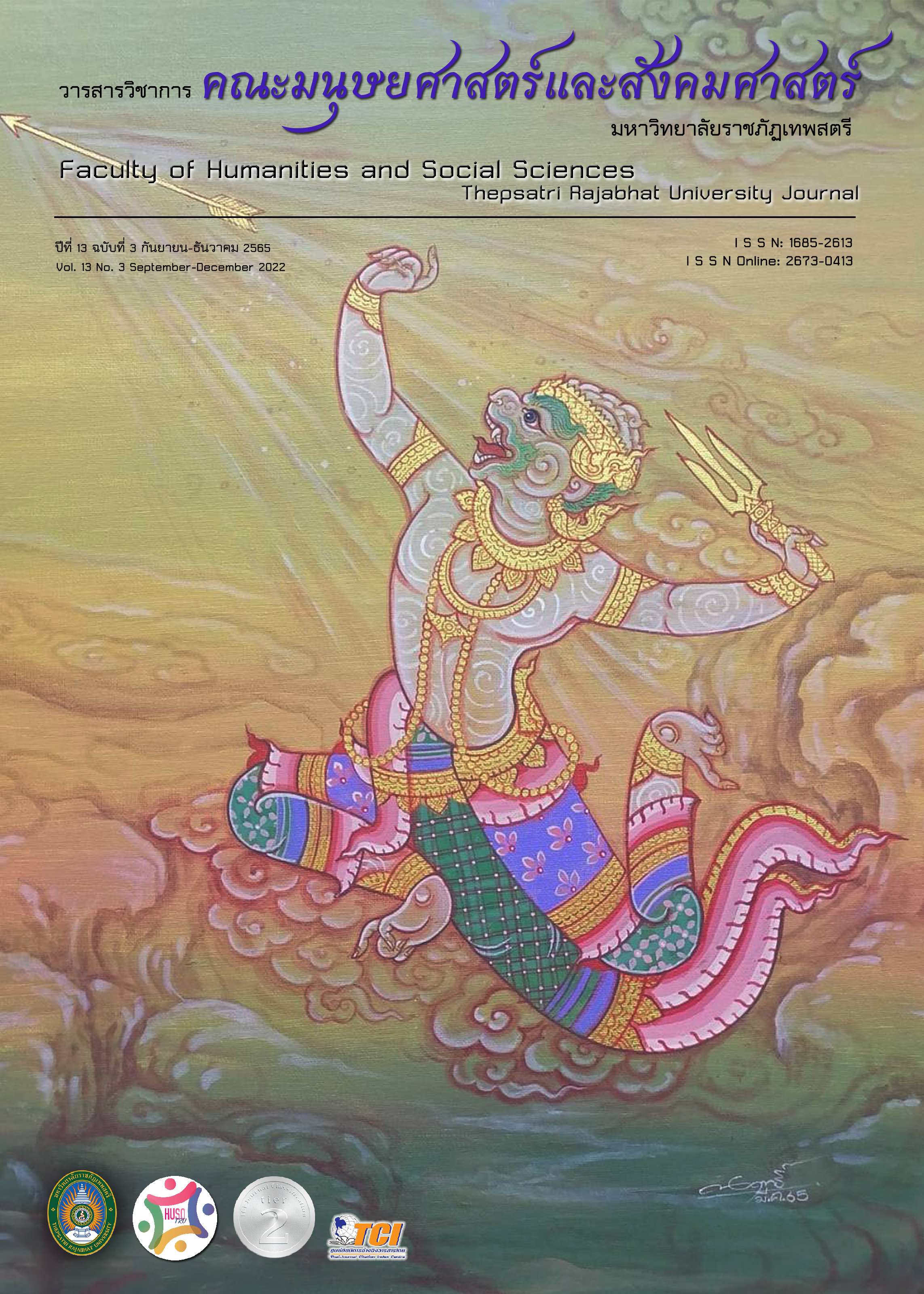Effects of Using Group Investigation Instructional Model on Learning Achievement and Abilities of Learning Transfer in Healthy Lifestyle Course of Higher Education Level
Main Article Content
Abstract
The purposes of this research were to 1) compare the learners’ learning achievement before and after using Group Investigation Instructional Model. 2) compare the learners’ abilities of learning transfer in Healthy Lifestyle course of higher education level before and after the usage of Group Investigation Instructional Model. The samples of this research were 72 undergraduate students enrolling SWU 246 Healthy Lifestyle course in the second semester of the academic year 2017. The research instruments were 1) learning achievement tests. 2) the test of learners’ abilities in learning transfer tests. The instrument used in the experiment was a set of unit plans using Group Investigation Instructional Model. The data was analyzed by arithmetic mean (x), standard deviation (S.D.) and t-test dependent.
The research findings were summarized in two topics as follows. First, the learning achievement after the usage of Group Investigation Instructional Model was higher than that before using this model at .05 level of significance. Second, the ability of learning transfer in Healthy Lifestyle course of higher education Level after the usage of Group Investigation Instructional Model was higher than that before using this model at .05 level of significance.
Downloads
Article Details

This work is licensed under a Creative Commons Attribution-NonCommercial-NoDerivatives 4.0 International License.
The content and information presented in articles published in the Academic Journal of the Faculty of Humanities and Social Sciences, Thepsatri Rajabhat University, are solely the opinions and responsibilities of the respective authors. The editorial board of the journal neither necessarily agrees with nor assumes any responsibility for such content in any manner whatsoever.
All articles, information, content, and images published in the Academic Journal of the Faculty of Humanities and Social Sciences, Thepsatri Rajabhat University, are the copyright of the journal. Any person or organization wishing to reproduce, disseminate, or otherwise utilize all or any part thereof must obtain prior permission from the Academic Journal of the Faculty of Humanities and Social Sciences, Thepsatri Rajabhat University.
References
ณัฐิกานต์ รักนาค. (2552). การพัฒนารูปแบบการเรียนการสอนตามแนวคิดการถ่ายโยงการเรียนรู้เพื่อส่งเสริมทักษะและกระบวนการทางคณิตศาสตร์ด้านการแก้ปัญหาการให้เหตุผล และการเชื่อมโยงของนักเรียนมัธยมศึกษาปีที่ 1. ปริญญานิพนธ์ดุษฎีบัณฑิต จุฬาลงกรณ์มหาวิทยาลัย.
ทิศนา แขมมณี. (2564). ศาสตร์การสอน: องค์ความรู้เพื่อการจัดกระบวนการเรียนรู้ที่มีประสิทธิภาพ (พิมพ์ครั้งที่ 23). กรุงเทพฯ: สำนักพิมพ์แห่งจุฬาลงกรณ์มหาวิทยาลัย.
เนตรนภา กิจรุ่งพิพัฒน์, และอนุสรา พันธุ์นิธิทร์. (2555). พฤติกรรมการดูแลสุขภาพของนักศึกษามหาวิทยาลัยศิลปากร วิทยาเขตสารสนเทศเพชรบุรี. จุลนิพนธ์บริหารธุรกิจบัณฑิต (การจัดการธุรกิจทั่วไป). เพชรบุรี: คณะวิทยาการจัดการ มหาวิทยาลัยศิลปากร.
ลักขณา เติมศิริกุลชัย. (2559). การพัฒนาโรงเรียนส่งเสริมสุขภาพ แนวคิด อุปสรรค และการแก้ไข. กรุงเทพฯ: คณะสาธารณสุขศาสตร์ มหาวิทยาลัยมหิดล.
สุรางค์ โค้วตระกูล. (2554). จิตวิทยาการศึกษา. กรุงเทพฯ: สำนักพิมพ์แห่งจุฬาลงกรณ์มหาวิทยาลัย.
Bloom, B. S. (1976). Human Characteristic and School Learning. New York: McGraw–Hill.
Gochman. (1988). Health Behavior: Emerging Research Perspective. New York: Plenume Press.
Haskell, R. E. (2001). Transfer of Learning: Cognition, Instruction and Reasoning. UK: Academic Press.
Hunter, M. (1995). Teacher for Transfer. CA: Corwin.
Joyce B., & Weil M. (2009). Models of Teaching (8thed). Boston: Pearson.
Mestre, J. P. (2002, January–February). Probing Adults' Conceptual Understanding and Transfer of Learning Via Problem Posing. Journal of Applied Developmental Psychology, 23(1), 9-50.
Ormrod, J. E. (1998). Educational Psychology Developing Learners (2thed). New Jersey: Prentice-Hall.
Pender. N.J. (1996). Health Promotion in Nursing Practice (3rded). New walk Connecticut: Appleton & Lange.
Sternberg, R. J., & Williams, W. M. (2002). Educational Psychology. Boston, MA: Allyn & Bacon.


